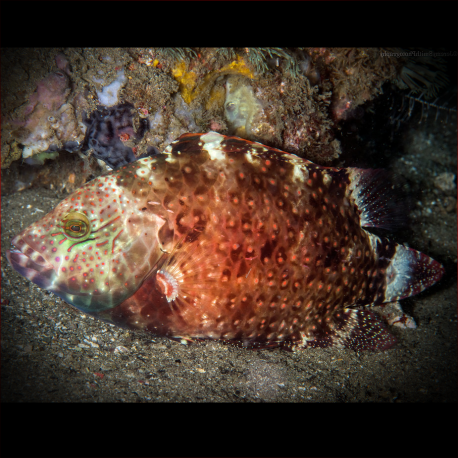More info
Datasheet
| Minimum Tank Size | 1000 litres / 264.17 US gallons |
| Maximum Size | 45.0cm / 17.72inches |
| Reef Compatible | Not reef safe |
| Temperament | Might be aggressive towards other species |
| Temperature | 22.2°C / 71.96°F - 25.6°C / 78.08°F |
| Specific Gravity | 1.020-1.025 |
| Carbonate Hardness | 8-12 |
| pH | 8.1-8.4 |
General Description
The Floral Wrasse, scientifically known as Cheilinus chlorourus, belongs to the Labridae family, characterized by their larger size compared to most Wrasses, reaching up to 45.0cm and even 6.5 feet in length. These fish are indigenous to the Indo-Pacific region, spanning from East Africa to the Marquesan and Tuamoto islands, north to the Ryukyu Islands, and south to New Caledonia and Rapa. Wrasses like the Floral Wrasse are known to be beneficial in reef aquariums due to their ability to control populations of unwanted invertebrates such as flatworms and pyramide snails, feeding on a diet ranging from zooplankton to large crustaceans and sea urchins.
Aquarium Suitability
Considered suitable with care, the Floral Wrasse presents average hardiness and a temperament that may exhibit aggression towards other species in the tank. Due to their predatory nature, they pose a threat to various invertebrates like shrimps, crayfish, crabs, small bivalves, sea urchins, and snails. Additionally, they may prey on smaller fish, making it essential to house them with caution in a large aquarium. When fully grown, these fish demand a substantial tank size, with recommendations exceeding a 1000-liter capacity, providing ample space for swimming and the rearranging of rocks and sand, which this species is known to do.
Care and Hardiness
Floral Wrasses require good hiding spots such as between live rocks and prefer to hide initially when introduced to a new environment. It is advised not to disturb them during this acclimation period to avoid stress. These fish thrive best when offered a varied diet consisting of fish, larger crustaceans like shrimp and crabs, and other invertebrates. For successful acclimatization, providing live food can increase their chances of adjusting to tank life. They exhibit hermaphroditic characteristics, capable of changing gender from female to male as needed, ensuring reproductive adaptability within captive settings.
Reef Suitability
While Wrasses are typically beneficial in reef aquariums, the Floral Wrasse is not considered reef-safe due to its predatory behavior towards various invertebrates. Therefore, caution is advised when housing them in reef setups, as they may pose a threat to the delicate balance of coral ecosystems.
Aquarium Setup
Setting up an aquarium for Floral Wrasses should include ample hiding spaces among live rocks, secure placement of rocks to prevent toppling, and a spacious environment for swimming. Monitoring water conditions closely, with ideal parameters including a temperature range of 22.2-25.6°C, pH levels between 8.1-8.4, carbonate hardness (KH) of 8-12, and salinity ranging from 1.020 to 1.025, is crucial for their well-being and longevity.
Behaviour
Floral Wrasses may exhibit initial shyness and hiding behavior until acclimated to their surroundings. They can be aggressive towards other tank mates, highlighting the importance of selecting compatible species to minimize territorial conflicts and stress. Additionally, these fish have a propensity for rearranging rocks and sand in their habitat, underscoring the need for stable substrate structures within the aquarium environment.

